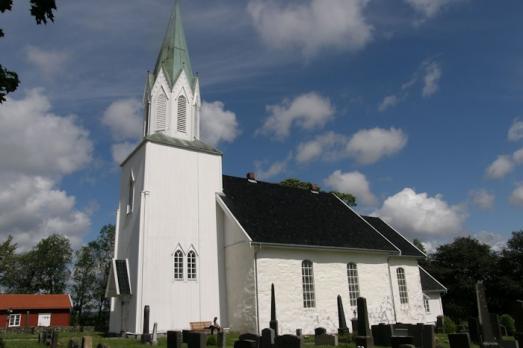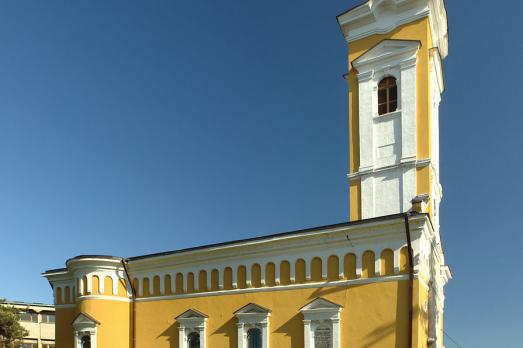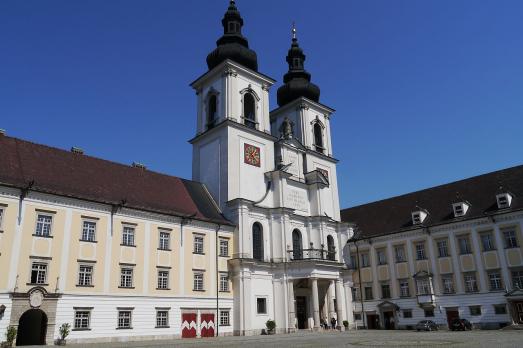
Kråkstad Church
Nordre Follo, NO
Kråkstad Church is a long church that dates back to the middle of the 12th century and has been restored and rebuilt several times.
Here you can search for a building to visit. You can use the map find destinations, or you can use the filters to search for a building based upon what different criteria.

Nordre Follo, NO
Kråkstad Church is a long church that dates back to the middle of the 12th century and has been restored and rebuilt several times.

Kraljevo, RS
The Kraljevo Cathedral was built from 1824 according to the will of Prince Miloš Obrenović I of Serbia. Built as a church, it became a cathedral only in 1859. Until that year, the seat of the bishop and the consistory was located at Čačak. In May 1984, the restoration of the iconostasis of this church began. The renovation took several months and the work was completed.

Krasnopol, PL
The Jewish Cemetery in Krasnopol stood once on the outskirts of the village. No tombstones have been preserved from it. The area of the cemetery was fenced by ESJF in November 2016.

Zaporizhzhia, UA
The Kravtsiv Synagogue, known as the Craftsmen's Synagogue, dates from the late 19th century. Nationalised during the Soviet period, it was returned to the community after Ukrainian independence in 1991 and restored in 1995.

Neapoli, GR
Kremasta Monastery is a historic complex built between 1593 to 1622 on a slope of the mountain of Kavalarais, between Neapolis and the village of Vryses.

Kremenets', UA
The exact period of the cemetery’s establishment is unknown. According to an expedition of the US Commission in the 2000s, the earliest preserved gravestone relates to the early 17th century. In 2018, the ESJF expedition did not locate this gravestone on the site. The cemetery fence was installed by ESJF in August 2017.

Sofia, BG
Kremikovtsi Monastery is a 14th-century Orthodox monastery near Sofia. It is still a functioning monastery

Kremsmünster, AT
Kremsmünster Abbey is a Benedictine monastery founded in 777 by the Bavarian Duke Tassilo III. From the middle of the 17th century, a large complex was built on top of the previous building. Together with Melk Abbey, it is one of the largest in Austria. Among the builders were Carlo Antonio Carlone and Jakob Prandtauer, who also designed the Melk Monastery Church. The monastery is known for its observatory (mathematical tower from 1750) and its school. The Kremsmünster Abbey Library is one of the largest and oldest in Austria. The magnificent 65-metre long room contains about 160,000 volumes, the most famous of which is the Codex Millenarius dating from around 800.

Düsseldorf, DE
The Kreuzherrenkirche was initially a monastery church of the Order of the Order of the Cross existing since the 15th century. After a long period of abandon in the 19th and 20th centuries (as a horse stable, storage room, depot and until 1957 as a tax office) it was re-consecrated in 1990.

Chemnitz, DE
The Evangelical Lutheran Church of St. Pauli, or Church of the Cross, was built in 1935-1936 as part of the St. Jakobi Kreuz parish. The building was destroyed during the bombing of the city on the night of 5th March 1945. It was rebuilt in the following years with several modifications. The façade and exterior were rebuilt in the same style it originally had. The interior was interior was redesigned by Chemnitz architects Laudeley and Kornfeld.

new
The Chassidic Route is a cultural and historical trail tracing the rich legacy of Jewish communities in southeastern Poland and western Ukraine. This region was central to the rise of Chassidism in the 18th century. Here, we highlight 10 remarkable synagogues you’ll discover along this route.

he cradle of the Industrial Revolution in Germany, Chemnitz, is well-known for its industrial heritage landscape, but the city is also home to remarkable examples of religious architecture from different historical periods. Join us as we explore the key landmarks of this European Capital of Culture 2025.

The twin towns of Nova Gorica (Slovenia) and Gorizia (Italy), lying on the border between the two countries, have a rich religious heritage, steeped in centuries of tradition. If you are looking for ideas for your visit, take note of these 10 religious sites that you should not miss.